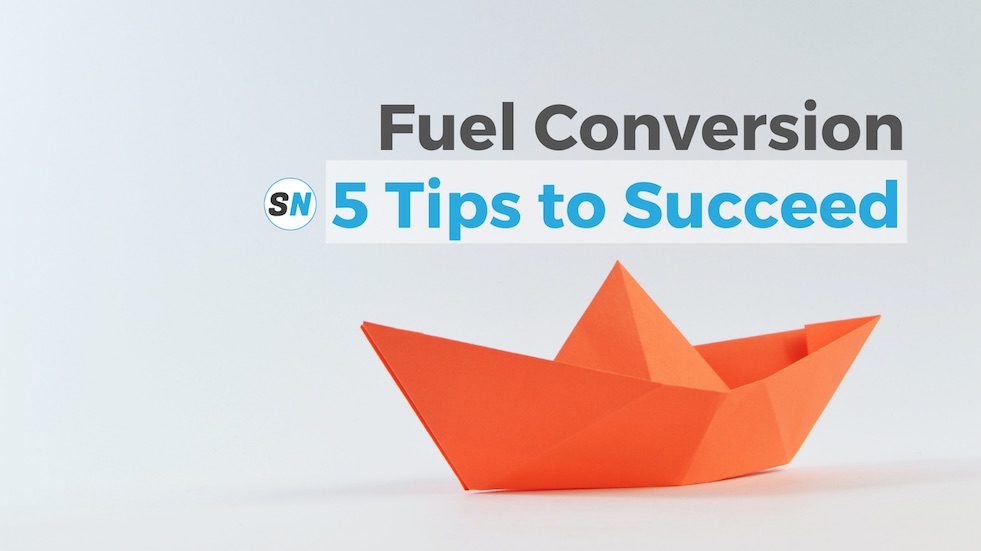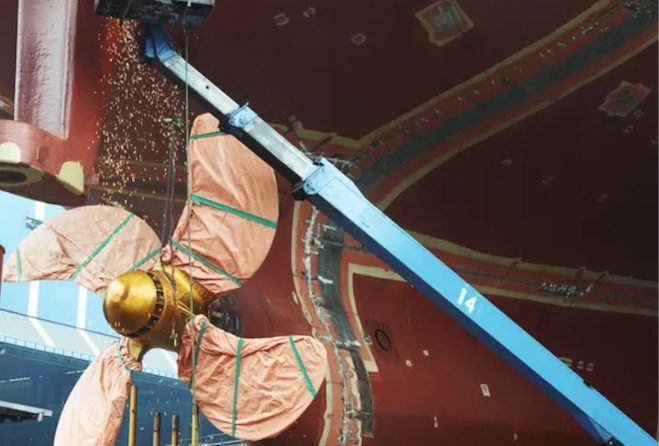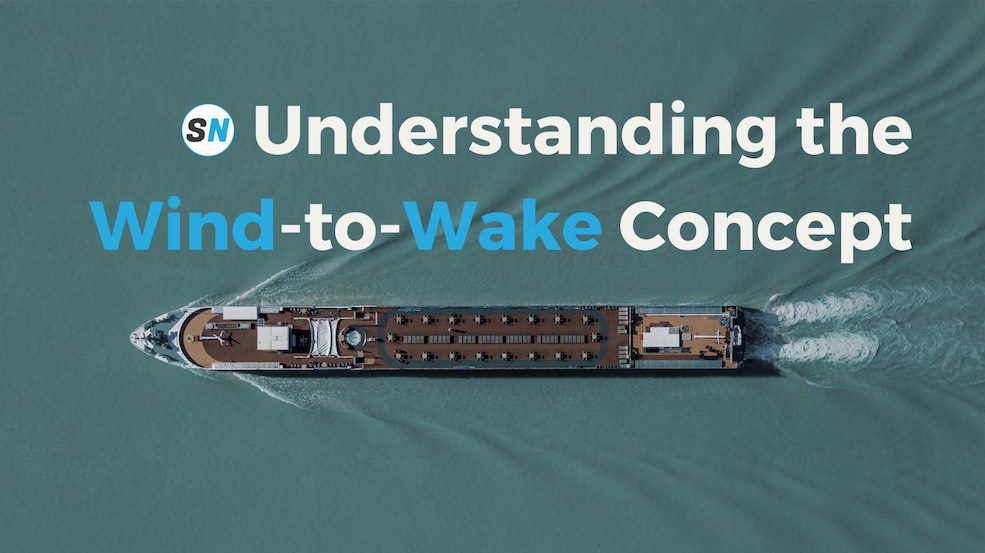28 November 2024
Marine Fuel Conversion – 5 Tips to Succeed

Regulations require a change in the marine industry in the longer term, more operators are turning to marine fuel conversion to run on lower carbon fuels. What’s needed to make the switch a success?
Table of Contents
Introduction
Regulations require a change in the way that the marine industry operates. In the short term, efficiency improvements and energy-saving technologies can help. But in order to hit tough regulatory targets in the longer term, more operators are converting their vessels to run on lower carbon fuels.
But what’s needed to make the switch a success? We’ll look at five things to take into account with marine fuel conversion in this handy quick guide.
1. Fuel Choice
All alternative marine fuels – LNG, ammonia, biofuels, methanol, and hydrogen, to name the main contenders – reduce carbon emissions from shipping. How environmentally friendly they are depends on how they are produced. A lifecycle approach to ship-generated emissions takes the entire value chain of the energy source into account – from well to wake. This includes the energy related to the production and logistics of the fuel in addition to the emissions created by combustion in the ship’s engines. The main factors to consider when evaluating which alternative fuel to choose are your emission reduction targets and the availability of each fuel along the route that your vessel operates.
Key Notes:
- Taking a well-to-wake approach when calculating emission reduction is important. The FuelEU Maritime Regulation demands a well-to-wake approach and others are expected to move away from tank to wake.
- Investigate the current and future availability of the fuel on your planned route.
- Crews will need to be trained to handle the new fuel.
2. Engine Fuel Conversion
You need to check if your engine can be converted to run on alternative fuels or if you need to replace it. Because of availability limitations for alternative fuels, the most popular choice is to convert the engine so that it can use the new fuel
in addition to the existing fuel. This allows you to use the alternative fuel when available and your traditional marine fuel when not.
Converting a vessel to use alternative fuels involves a lot more than just converting the engine. Depending on the fuel, double-walled fuel piping might be needed to prevent leakages. Converting the engine involves mechanical upgrades as well as upgrades to the engine control and automation systems.
Classification societies may consider converting a vessel to run on an alternative fuel to be a major fuel conversion. This could mean that documentation such as the engine tier levels related to NOx emissions needs to be updated, which widens the scope of the fuel conversion. This is because it might be necessary to install a selective catalytic reduction (SCR)
exhaust abatement system to tackle the NOx emissions.
Key Notes:
- Converting a vessel involves far more than just converting the engine.
- Alternative fuels like methanol come with additional safety requirements.
- The scope of the fuel conversion may widen depending on the fuel being considered.
- Due to limitations in alternative fuel availability, fuel-flexible engines are recommended.

Methane Slip in LNG 4-stroke Otto-cycle engines
LNG offers many benefits but certain engine types have been found to release significant amounts of unburnt methane slip, a powerful climate gas.
Ship Nerd
3. Available Space Onboard
Alternative fuels like hydrogen, ammonia, and methanol are less energy-dense than conventional marine fuels, which means bigger fuel tanks are needed. When converting to a fuel-flexible engine a double fuel supply system might be needed, depending on the chosen alternative fuel. All this will require more room than the current diesel setup.
For gaseous fuels requiring pressurized tanks, bigger structural changes to the vessel may be required. Even for methanol, which can use the same kind of tanks as diesel, new cofferdams will need to be installed. Again, this
requires finding extra space.
Key Notes:
- A technical feasibility study is a key part of identifying in detail what converting the vessel will involve.
- Compromise is probably needed – unlike new builds, retrofits have to work within a set space.
- Consider how reduced cargo space may affect your operations.
4. Business Case
To ensure a successful fuel conversion to alternative fuels, you need to create a business case. What is the target you need to reach and how will a fuel conversion enable you to reach that target? What fuels are being considered and what impact will the conversion have on your vessel and its operations? Is the CAPEX recoverable in the vessel’s remaining operational lifetime? Key things to consider include:
- What is the operational profile of the vessel – what routes does it sail and what is its cargo?
- How many extra years of compliance will a fuel conversion give your vessel?
- How will the extra space required for new tanks and systems impact your revenue stream?
- What are the price and availability of your chosen alternative fuels on the vessel’s route?
- What will the fuel conversion cost?
- Are your customers ready to pay more for a green carrier?
- What are the financial benefits of a lack of penalty fees or better access to green finance?
Key Notes:
There are multiple overlapping environmental regulations affecting shipping. They are complex and dynamic so make sure you fully understand their implications.
For example, do you need to measure your emissions from well to wake or tank to wake, what emissions are being measured, and what are the penalties for non-compliance?

Retrofit vs newbuild? 45% of ships today will not comply
Carbon regulations targeting older, less efficient ships. Is it wiser to retrofit an existing vessel to improve its ratings, or replace it with a newbuild?
Ship Nerd
5. Planning
You will need to consider the best time to undertake a fuel conversion and what steps need to be taken. Installing the new fuel tanks and fuel handling system is carried out in a drydock, so is best timed for when your vessel has its scheduled drydocking. The installation normally takes about 4 weeks. The engine conversion itself can be done separately, does not require drydocking, and can usually be carried out while the vessel is in service.
Prior any Action
To ensure success, start with a feasibility study.
First, take into consideration the actual vessel and use real operational data to determine the impact of the fuel conversion. This is critical to ensure that the information is as realistic as possible. Then highlight the potential OPEX impact and also the operational impacts, such as potential changes needed to the route or cargo transported (for example due to reduced space onboard and the need to switch to a more lucrative cargo).
Then perform a technical feasibility study with a tailor-made case based on the actual vessel and hull. Looking at the need for engine conversions or in some cases new engines, as well as where to find fuel tanks and all the needed auxiliary equipment.
Finally, work with the yard and vessel to get all the details and make sure the technical feasibility study gives a real-world picture.
Source: Wartsila
See Also
Shipping decarbonization goes beyond funnel emission goals and subsequent fuelling options. Get up to speed with Wind-to-Wake, the updated method of lifecycle assessment for green fuels.

Wind-to-Wake Concept for Shipping Decarbonization
Shipping decarbonization goes beyond the norm. Get up to speed with Wind-to-Wake, the updated method of lifecycle assessment for green fuels.


